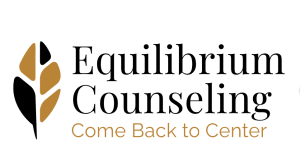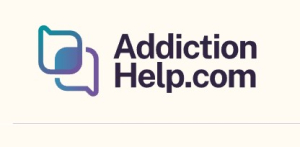Each person has a sexual orientation and gender identity. Sexual orientation refers to whom you are romantically attracted to, while gender identity refers to the internal sense of being either male, female, or neither. Here we look at mental health conditions among the LGBTQ+ community.
Though being a member of the LGBTQ+ community is not considered a mental condition, most individuals experience different kinds of mental challenges. The most affected individuals are those who identify as bisexual and transgenders. Younger LGBTQ+ members are also at a higher risk of experiencing mental problems compared to non-LGBTQ+ youth groups.
Most LGBTQ+ individuals who get support from families and friends are likely to have lower chances of experiencing mental problems since they can recover fast from whatever they face from the general population.
Due to fear, discrimination, shame, and traumatic events that may lead to depression and anxiety, LGBTQ+ individuals are believed to seek mental health services 2.5 times more than non-LGBTQ+ individuals. Identifying as LGBTQ+ qualifies one to be part of a second or third community such as BIPOC (Black, Indigenous, or People of Color), individuals with physical disabilities, or those with low socioeconomic status- communities that are most marginalized and discriminated against. These individuals are likely to have more mental challenges than those in first-class communities.
Mental Health Conditions Among LGBTQ+ Community – Anxiety
With regards to most studies, LGBTQ+ youths are most likely to experience anxiety and depression. According to the Trevor Project survey conducted in 2020, mental health issues among the LGBTQ+ community are rising due to the COVID-19 pandemic.
LGBTQ+ youth are more likely to experience anxiety and depression 1.75 times more than non-LGBTQ+ youth. The risk is even higher among non-binary and trans youth since they were 2.4 times more likely to experience the same.
Due to COVID-19 protective measures such as lockdown, LGBTQ+ members are experiencing severe symptoms of anxiety and depression, especially for those who were quarantined with unsupportive loved ones. ? of the respondents have revealed that they are not who they are at home, while 16% feel unsafe at their own home. Sadly, 1 in 4 LGBTQ+ youth is unable to access mental health services.
LGBTQ+ Members and Depression
Due to loneliness, discrimination, bullying, rejection, and stigma, most LGBTQ+ individuals are likely to experience depression. Depression is a serious mental challenge that may result in substance abuse, suicidal thoughts, and other life-threatening behaviors if left untreated.
LGBTQ+ youth who experience bullying and discrimination at school are more likely to have depression, drop out of school, engage in substance abuse, or commit suicide than non- LGBTQ+ youth. Those with unsupportive families and friends are also at a higher risk of having depression than those who receive support from loved ones.
Mental Health Conditions Among LGBTQ+ Community – Stress
Other than the common stressors for every teenager, such as puberty, school, conflict with parents, fitting in with friends, and planning for the future, LGBTQ+ youth also experience unique stressors brought by rejection and stigma. According to a 2018 Human Rights Campaign, the following was discovered:
- 77% were depressed
- 95% of respondents had trouble sleeping at night
- Only 26% felt safe at school
LGBTQ+ Youth and Low Self Esteem
Fear, rejection, and anti-LGBTQ+ talks can affect someone’s self-esteem. Each person deserves a conducive environment for them to achieve their goals in life. Unfortunately, low self-esteem makes one feel worthless, hindering one from discovering their full potential. Results of this may be a failure, leading to a serious mental health problem.
According to a 2018 Human Rights Campaign report, while 91% of LGBTQ+ youth are proud of their identity, 70% reported feelings of worthlessness or hopelessness in the past week. 61% said that they have heard members of their families having anti-LGBTQ+ talks. Most LGBTQ+ youth of color reported high cases of rejection, with only 11% saying that their racial and ethnic were viewed positively.
LGBTQ+ Youth and Substance Abuse
Most LGBTQ+ youths do not have loved ones to whom they can ask for help. This makes it difficult for them to access treatment and rehabilitation for substance abuse. Due to high cases of discrimination, rejection, and bullying, LGBTQ+ youths are most likely to turn to substance and alcohol abuse. LGBTQ+ youth who experience bullying at school are more likely to find refuge in substance abuse.
LGBTQ+ Individuals and Suicide Thought
Most LGBTQ+ individuals have suicidal thoughts at least once in their lifetime. While some act on it and end their lives, some are constantly tormented. Suicidal thoughts are attributed to rejection, loneliness, depression, discrimination, stigma, and bullying. Most LGBTQ+ youth who are unsupported by family and friends are at greater risk of having suicidal thoughts and acting on them.
Mental Health Conditions Among LGBTQ+ Community – Finding Support
Though mental problems are common in the LGBTQ+ community, finding help is the most crucial step. Some support options may include:
- Talking to an LGBTQ+ adult who can offer reassurance
- Seeking help from an LGBTQ+ friendly therapist
- Joining LGBTQ+ advocacy and support the organization
- Opening up about your feelings to a trusted family member or friend
Mental Health Conditions Among LGBTQ+ Community – Suicide Prevention
As earlier stated, most LGBTQ+ youth may experience suicidal thoughts. If you are certain that your loved one is at risk of acting on their suicidal thoughts, it’s advisable to seek help as soon as possible. Talk to a psychologist or contact 911 and provide them with accurate information. Remember not to leave their side or in a closed room until help arrives.
Related: How to Improve Mental Health Care for LGBTQ+ Youth
LGBTQ individuals experience high rates of discrimination, bullying, isolation, and rejection. This leads to higher cases of mental problems in the community. If you know someone from this community, try as much as possible to be there for them, support them, and defend them if they are discriminated against in your presence. To discover their potential, they need to be in a good and conducive environment.















